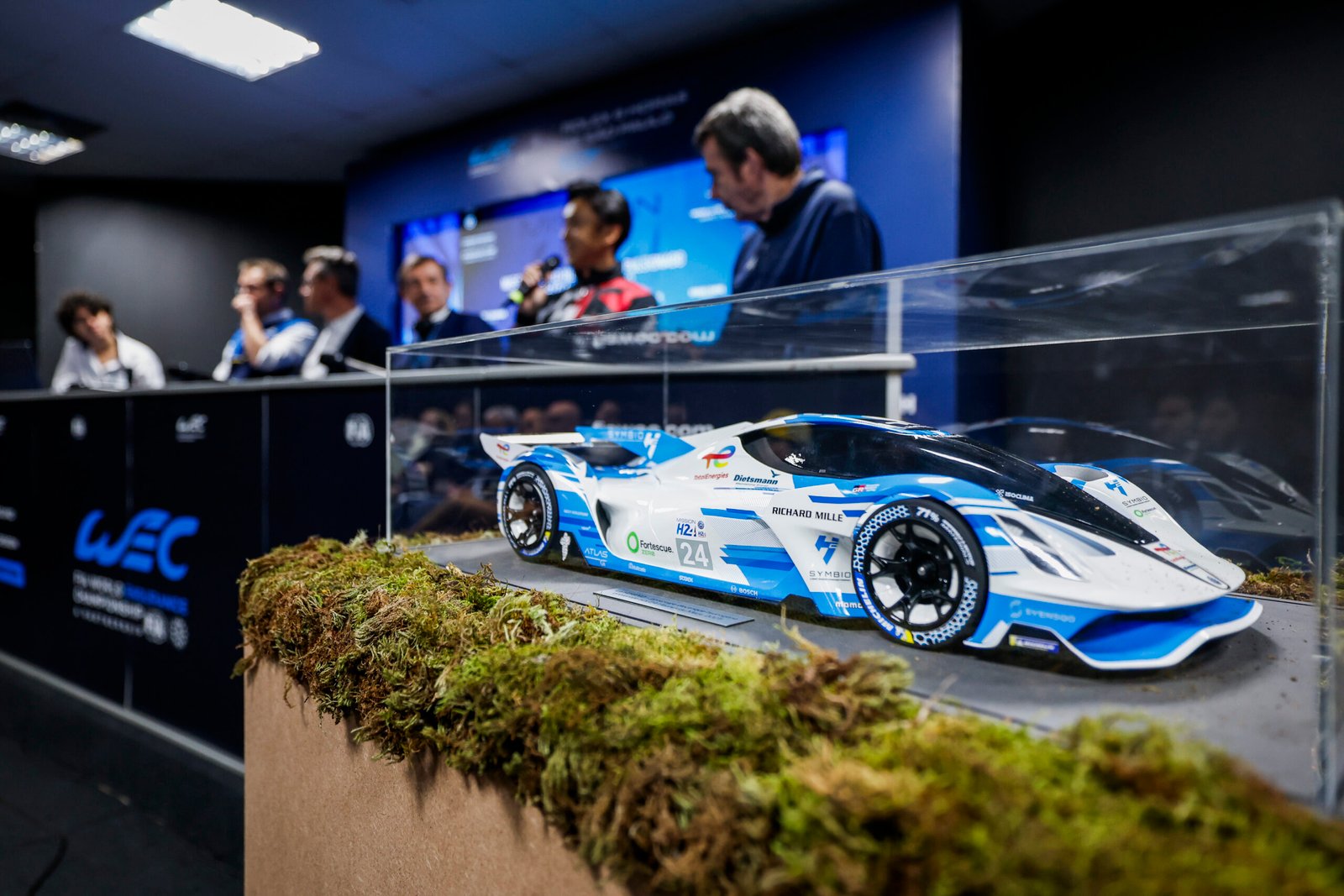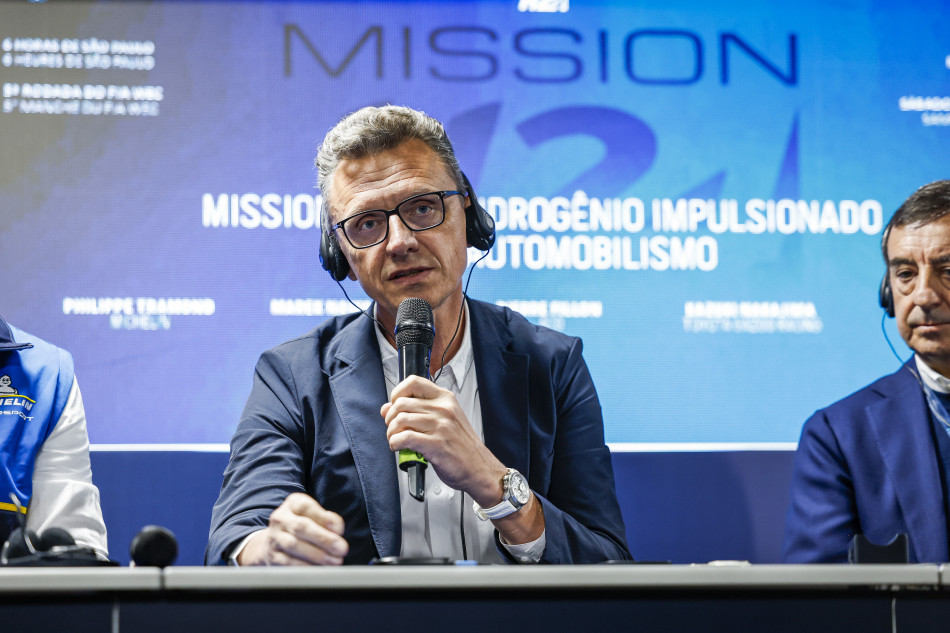
As the FIA World Endurance Championship had its fifth stop of the eight-event season at Brazil’s renowned Interlagos circuit, attention briefly shifted from the on-track action to the future of sustainable motor sport, with the FIA’s Marek Nawarecki featuring among several high-profile speakers taking part in a hydrogen-focused press conference
Held on the Saturday of the 6 Hours of São Paulo race weekend, the event brought together leading voices from the endurance racing ecosystem, with the panel of speakers including Pierre Fillon (ACO President), Kazuki Nakajima (Vice-President of Toyota Gazoo Racing Europe), Bruno Famin (Alpine Vice-President of Motorsport), and Philippe Tramond (Michelin Motorsport Technical Director).
Fillon reflected on the journey that began in 2018 with the MissionH24 project: “Decarbonising racing isn’t just a vision, it’s a duty. It’s the DNA of the 24 Hours of Le Mans and the WEC. First, we reduced fuel consumption by almost 50% with hybrids, and the work we do today with hydrogen will shape motor sport and mobility for future generations,” he acknowledged.
“Earlier this year, the FIA approved its first-ever safety regulations for vehicles powered by liquid hydrogen during its FIA World Motor Sport Council meeting in Macau, marking a major milestone,” said Nawarecki, Senior Circuit Sport Director at the FIA. “This is a pivotal stage in our journey. These regulations, added to the International Sporting Code, will underpin the future of hydrogen in the FIA WEC.”

The regulations in question were developed with input from industry experts across sectors such as aerospace, energy, hydrogen infrastructure, automotive hydrogen storage, refuelling technologies, system integration, risk assessment, and safety engineering, as well as automotive manufacturers and the ACO, setting strict standards for areas such as vehicle integration, storage systems, and refuelling procedures.
The conference also showcased significant progress made by manufacturers. Alpine’s Alpenglow Hy6 and Toyota’s GR Corolla H2 have already taken to the track – the former completing demonstration laps at Circuit de la Sarthe and Spa-Francorchamps on the occasion of WEC events (recording a speed of 313 km/h on Le Mans’ Mulsanne Straight), and the latter successfully finishing the 24 Hours of Fuji earlier this year. Both Alpine and Toyota have opted for hydrogen-powered combustion engines over fuel cells, citing the driving experience and technical relevance.
“[The car] participated in the 24 Hours of Fuji, in the hands of Akio Toyoda, among others,” said Nakajima. “It did not experience any major problems during the event. We were able to improve the refuelling system. These are crucial points for deploying hydrogen, a technology that already exists and is promising for both competition and mobility.”
Bruno Famin spoke about hydrogen’s potential: “Hydrogen is an interesting solution; it complements all-electric,” said the Alpine Vice-President of Motorsport.
“In the Alpenglow, hydrogen powers a combustion engine, which requires a specific combustion process and a dedicated storage and filling system. The advantage of the combustion engine? It remains a combustion engine with all its sensations, noise, and vibration,” he concluded.
Michelin’s Tramond shed some light on the tyre development, highlighting that the manufacturer’s product is designed to withstand the unique load characteristics of typically heavier hydrogen-powered vehicles without compromising performance, while also being composed of over 70% recycled or renewable materials, with the Frenchman describing it as representing “properties worthy of a racing tyre, respectful of the planet.”
Starting in 2028, hydrogen-powered prototypes are set to join combustion-engine race cars on the FIA WEC grid.
Alongside the conference, fans at Interlagos engaged with interactive hydrogen displays, reinforcing growing public interest in the future of sustainable racing. It was not the first time hydrogen featured prominently during a WEC round this season. At Spa-Francorchamps in May, the FIA supported dedicated hydrogen-themed fan activities organised by the ACO to promote its MissionH24 project, and just weeks later, the Hydrogen Village at the 24 Hours of Le Mans offered visitors a closer look at the technology that is set to propel endurance racing in the future.

